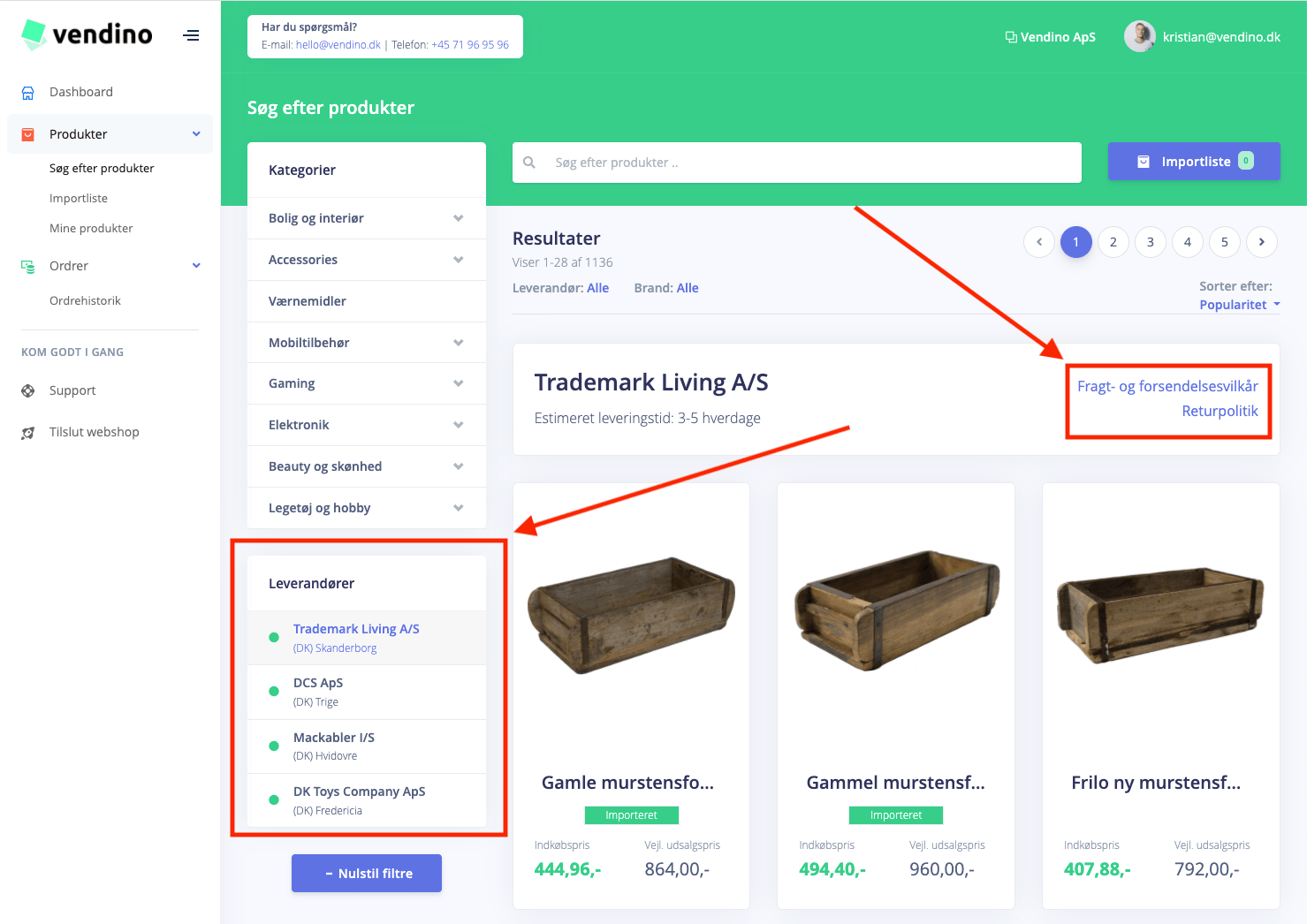The role of the freight supplier
In order for the goods to get from A to B, a freight provider must organise the transport of the goods. This could be PostNord, GLS, DHL, etc. A freight supplier plays an important role when you dropship. Without freight, the products cannot reach the customer. The freight provider charges for shipping the order and depending on your business model, either you or the customer pays for the shipping costs.
But how should you approach shipping costs when running an online store? Should the customer pay the freight? Should shipping be free? Variable shipping rates? There are actually different approaches, which we'll cover in this article.
Free shipping
If you choose to go with offering your customers free shipping, you should factor the shipping costs into the product prices.
For example, let's assume that your shipping costs for each order are £50. You want to offer free shipping in your online shop, but your minimum profit on product sales is, for example, £30 for one unit. Let's assume that the customer only buys this one product. In this case, it would not be profitable and you should consider moving forward with one of the following scenarios:
- Look at the possibility of increasing prices for your products.
- Create a shipping rule in your shop so that the customer must order for a minimum of X amount of money in order to get free shipping - Here it is important to make a calculation that ensures that you always make a profit when you make a sale.
- The customer has to pay for the shipping - not exactly a solution to the problem, but for some, this will make the most sense. Take a look at what your competitors are offering. This varies from industry to industry and product category to product category.
Variable freight rates
In some cases, especially if you sell furniture and interiors, it makes sense to set variable shipping rates. For example, you may sell heavy furniture (which costs more to ship), while selling lighter products such as duvets and pillows (which cost less to ship). Here, most CMS (Content Management Systems), such as Shopify or DanDomain, allow you to set up variable shipping rates. In simple terms, this means that you create a shipping rule so that all orders for products under X number of kilos will cost X number of DKK to ship, whereas all orders for products over X number of kilos will cost X number of DKK to ship. This way, you avoid customers who only want to buy lightweight products having to pay a high shipping rate, which could ultimately result in them not completing the purchase.
You can read more about how to set up shipping, shipping rules and rates in different CMS systems:
- How to set up shipping rates and shipping rules in Shopify
- How to set up shipping rates and shipping rules in WooCommerce
- How to set up shipping rates and shipping rules in DanDomain
Overview of shipping in Vendino
Have you chosen to use Vendino to support your dropshipping business? Then it will be possible to see each supplier's shipping options, shipping prices, etc. when you are logged in to app.vendino.com.
You can view freight and shipping terms at any time by selecting the respective supplier and clicking through to the terms they have provided:



Leave a Reply